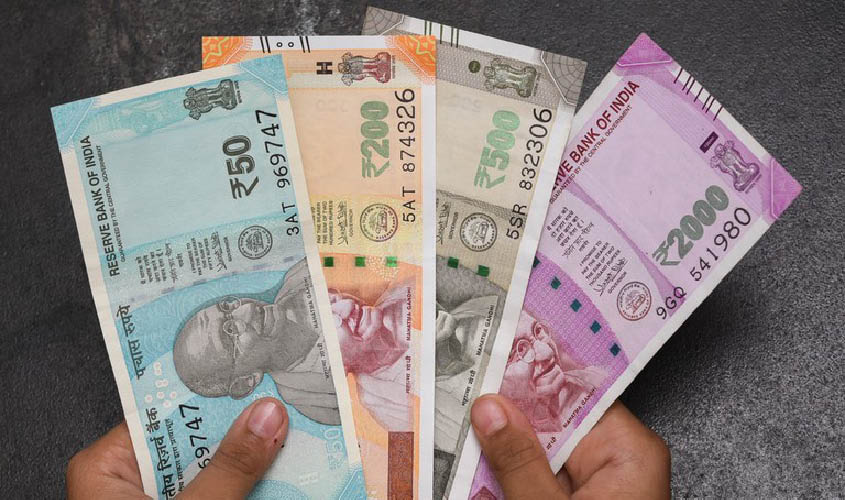Finance Minister Arun Jaitley is a brave man, for it calls for a great deal of courage to defend as tenaciously as he has the demonetisation of high-denomination currency notes on 8 November 2016. A good lawyer that he is, he defends a move that hit several ecosystems in the economy, took away innumerable jobs, and affected the image of the economic administrators of the country.
The Reserve Bank of India’s annual report for 2017-18 in August underlined a hitherto unknown effect perpetrated by the invalidation of the high-denomination currency. The RBI report carried a box, “The Curious Case of Reverse Import Substitution: The Indian Experience”, highlighting the havoc wreaked by demonetisation. “During 2017-18, there was a surge in imports, especially in the category of non-oil non-gold items, which broke out of the traditional co-movement with export behavior but coincided with a period of sluggish manufacturing activity,” the RBI report said. “This has given rise to concerns that disruptions in the production/supply chain during post-demonetisation have forced domestic demand to spill over into imports in order to overcome domestic supply constraints. This phenomenon of reverse import substitution could reduce GDP in India through leakages of domestic demand into external markets.”
Evidently, the Central bank was too politic—at that point of time—to mention that demonetisation hit several ecosystems in the economy in the name of formalisation. The RBI, however, stoutly said that the ill-effect in terms of growth was “transient”. According to the Central bank, “from November 2016 up to September 2017…reverse import substitution effects was (sic) at best transient and ebbed gradually as industrial activity in India emerged out of its sluggish phase and regained its momentum.”
Obviously, millions of jobs were lost, most of them in the informal sector. Against this backdrop, the claim of demonetisation having helped the “weaker sections” sounds hollow. The Finance Minister asserted in a Facebook comment on the second anniversary of demonetisation, “Financial inclusion was another important step to ensure that even weaker sections became part of the formal economy. Jan Dhan Accounts have resulted in most people being connected to the banking system. The Aadhaar law has ensured that direct benefit transfer of government support system reached directly into the bank accounts.”
But what do the poor do with financial inclusion if they lose their livelihood and regular income? How does getting “connected to the banking system” help them if they don’t have anything to deposit? Can direct benefit transfer or doles from government substitute for jobs?
While the government continues to defend demonetisation, the Opposition is unable even to highlight the damage. Both exhibit an infatuation with growth rate. Jaitley and other apologists for the ruling dispensation continue to harp upon the fact that the economy is back on track, that the rate of expansion has recovered, that we are moving towards 8% growth. The Opposition keeps denying these claims.
Consider former Prime Minister Manmohan Singh’s recent comment: “Beyond the steep drop in headline GDP growth numbers after demonetisation, the deeper ramifications of notebandi are still unravelling. Small and medium businesses that are the cornerstone of India’s economy are yet to recover from the demonetisation shock.” Singh, who is an eminent economist, did mention “a direct impact on employment,” but his emphasis, as also of other Opposition leaders’, seems to be on growth rate.
But what is the point in having a high growth rate if no employment is generated, as was the case when Singh was the Prime Minister? It needs to be mentioned here that the overall growth rate during five years (1999-2004) of the Atal Bihari Vajpayee regime was below 6%, but in that period 60 million jobs were created. In the 10 subsequent years under Singh, the GDP grew at an average of about 8%, and yet about 15 million jobs were added.
Industry has also hinted at reverse import substitution. “While there is no alternative to crude oil and gold imports, domestic supply constraints have led to an increase in imports by well over the double digit in as many as 22 (other than crude and gold) out of 30 top import items,” an analysis by the business chamber Assocham said in August.
Between July 2017 and July 2018, Assocham said, imports of leather and leather products saw a rise of over 22% from $79.66 million to $97.54 million, while electrical and non-electrical machinery witnessed a 30.59% jump in imports from $2.4 billion to $3.15 billion.
In other words, direct and indirect effects of demonetisation are not limited to job creation; they extend to the current account deficit and the rupee. But government functionaries seem to believe the mythology about demonetisation that they themselves have created.

